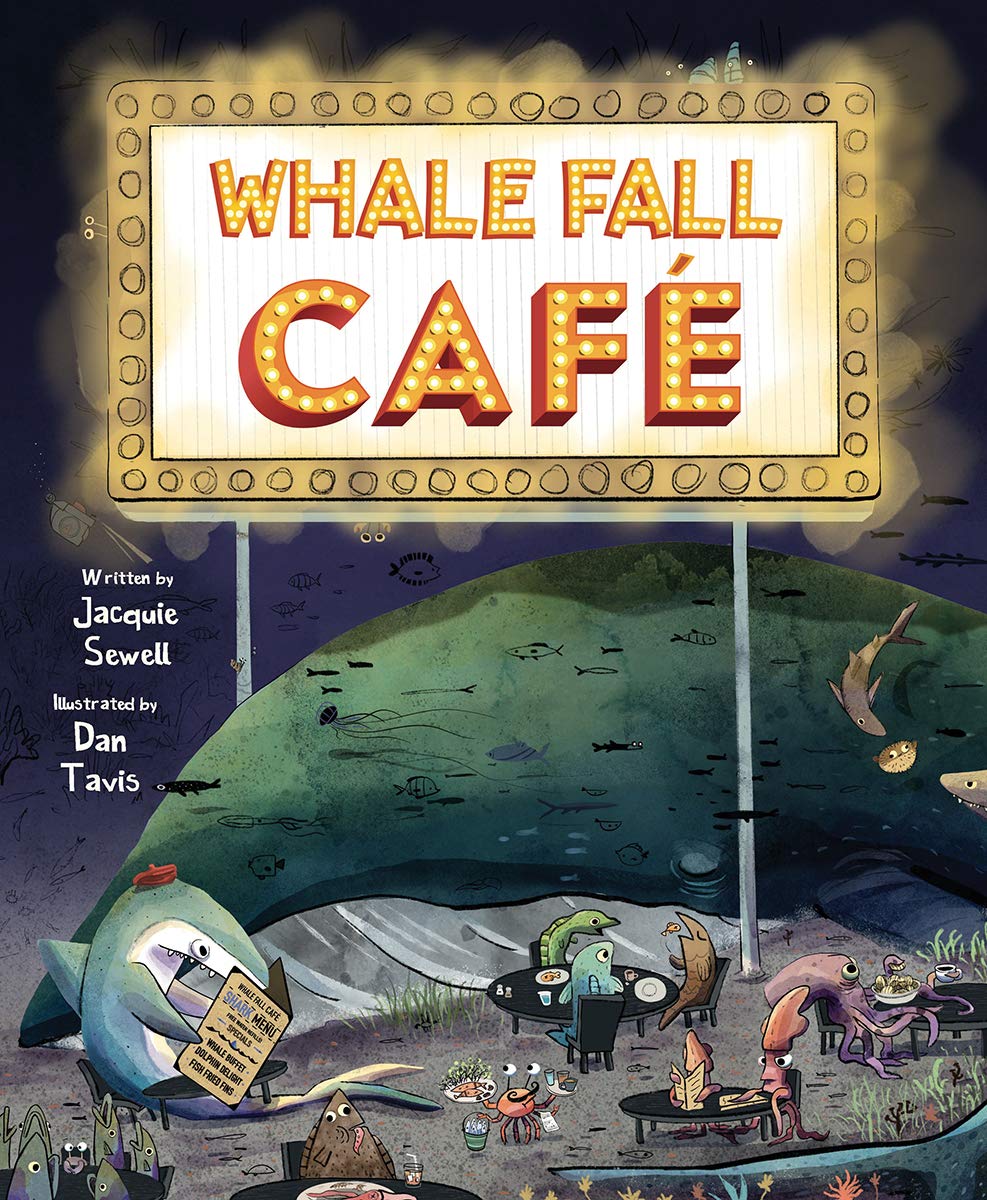Gr 3-5–Whales can live for a century in the wild, but what happens next? Join Dr. Fish in their submersible to explore a “whale fall,” the term used to describe a whale carcass, as it drifts to the ocean floor and supports diverse life forms for decades. Readers learn about the phases of whale decomposition, as the body transforms from a meal for sharks and barracudas near the ocean’s surface into sedimentary food for microorganisms and invertebrates. The text explains that thousand-year-old whale bones have been found encrusted with thriving anemones. Specialized scientific information (“extremophiles,” “osedax,” “chemoautotrophic bacteria,” etc.) is presented in a way that will make sense to readers. However, the text paired with gentle illustrations that soften the reality of a whale’s death (hagfish rendered in pinks and purples; a whale pictured upside down with its eyes shut) seems geared for a younger audience and makes it hard to visualize what a true whale fall, and the scavengers and specialists who make it their home, look like in the wild. Back matter includes photographs and a glossary. This unique title joins the ranks of nonfiction works about unpleasant animals, including
Pink Is for Blobfish and
What Do They Do with All That Poo??
VERDICT A second purchase, but one that will satisfy readers interested in more esoteric nonfiction topics.




Be the first reader to comment.
Comment Policy:
Comment should not be empty !!!